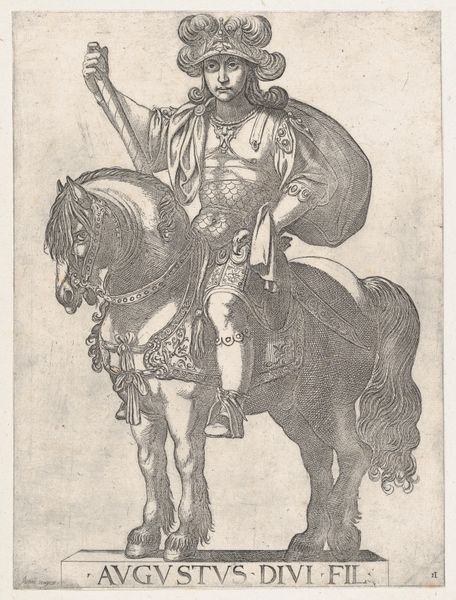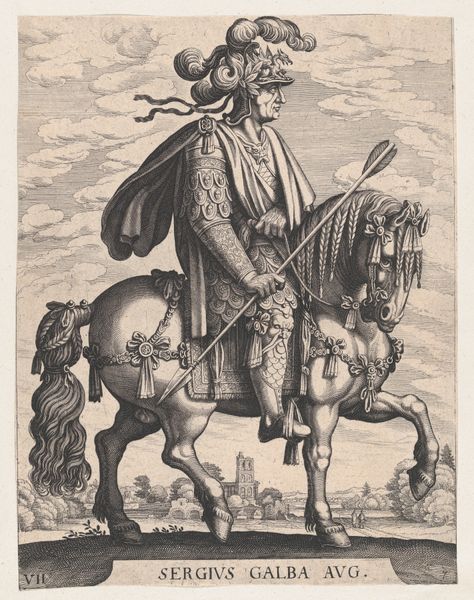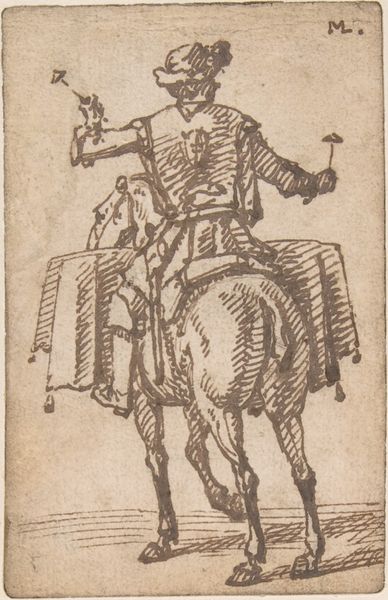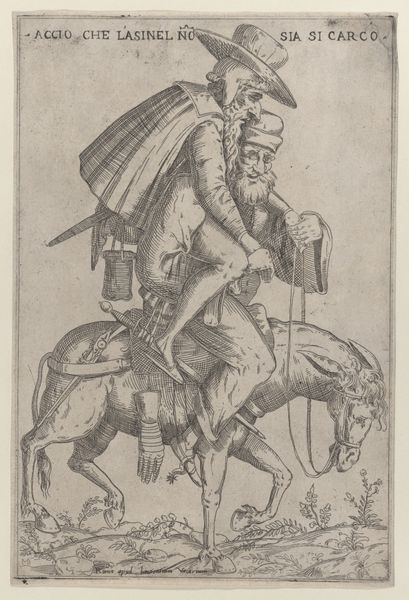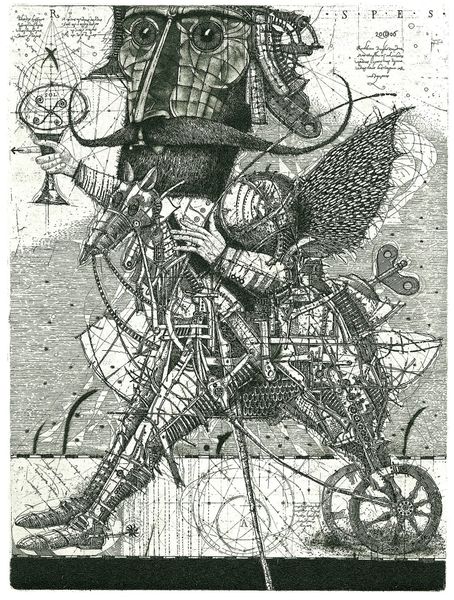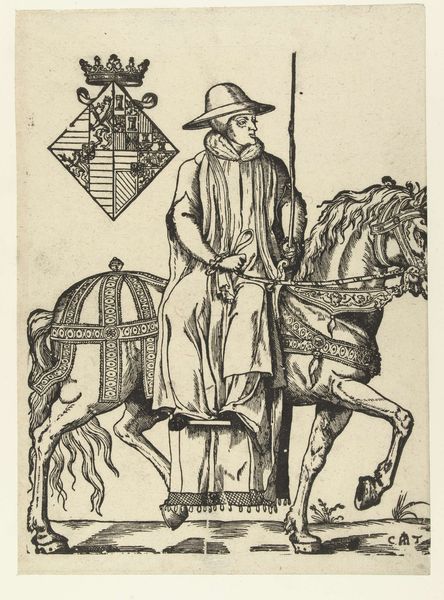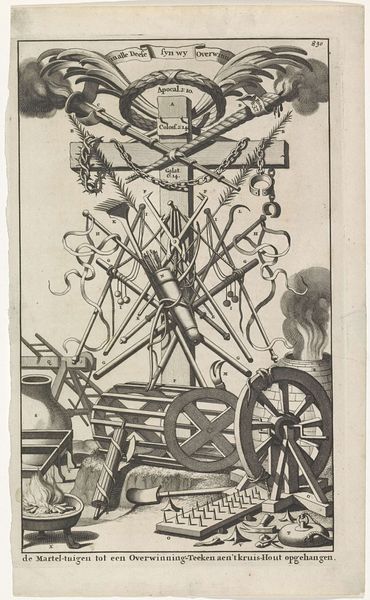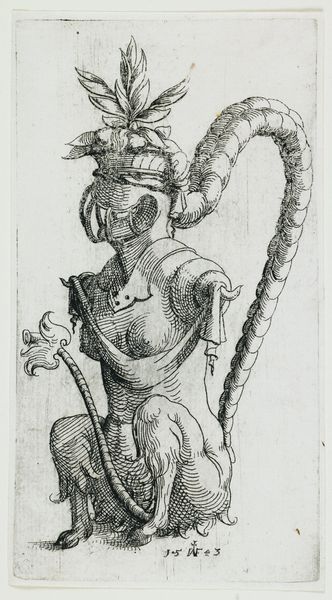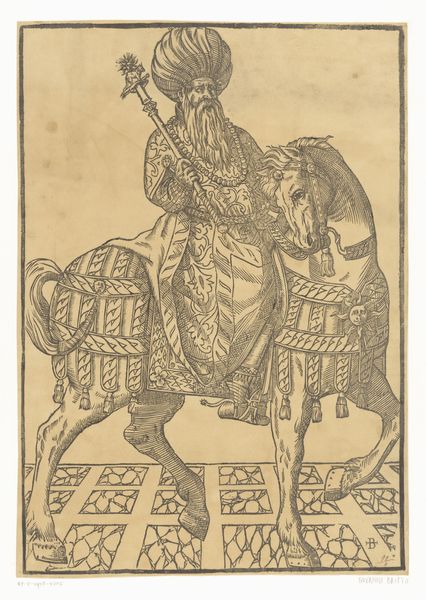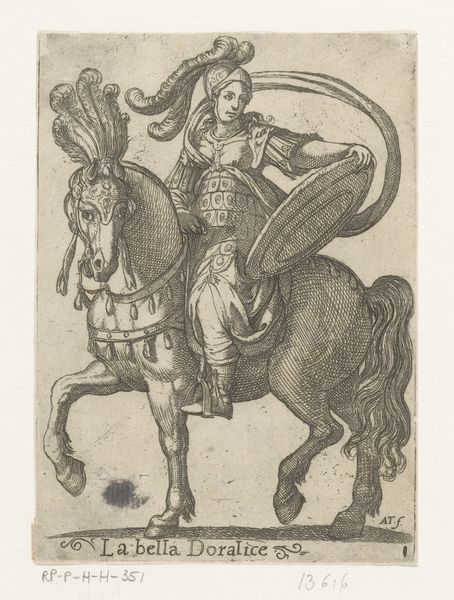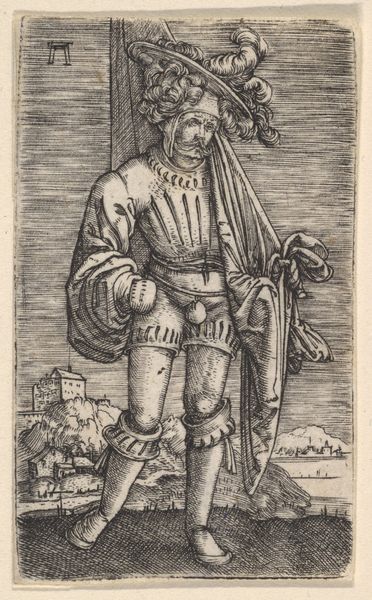
Instruments of Human Sustenance (Humani Victus Instrumenta): Agriculture 1569 - 1600
0:00
0:00
drawing, print, engraving
#
portrait
#
drawing
#
allegory
#
narrative-art
# print
#
mannerism
#
orientalism
#
academic-art
#
engraving
Dimensions: Sheet: 14 11/16 × 9 13/16 in. (37.3 × 25 cm)
Copyright: Public Domain
Curator: Here we have "Instruments of Human Sustenance: Agriculture," an engraving dating roughly from 1569 to 1600. It is currently held in the collection of the Metropolitan Museum of Art. Editor: My initial reaction is that this piece is incredibly intricate. It's like a puzzle made of tools and farming equipment! A little unsettling, yet fascinating to decode. Curator: It is indeed intricate. This work exemplifies Giuseppe Arcimboldo's distinctive style, where he composed portraits from arrangements of objects. What’s particularly compelling here is how agriculture, a crucial societal activity, is elevated through this representational format typically reserved for nobility. Editor: I am intrigued by the choice of material and the technique. An engraving, requiring such meticulous labor to transfer the design onto the plate. It reflects a period when the means of reproducing images was a highly skilled craft, aligning with the theme of labor depicted in the image itself. The layers of human action that went into agriculture and artistic craft at that time. Curator: Absolutely. And the symbolic weight is immense. Consider the ways this composite head alludes to the cyclical nature of farming, but also how the selection and arrangement of the specific implements could be making a subtle political or social statement. It prompts us to consider who this "agriculture" figure really represents. Editor: Considering the material implications, the depicted objects offer clues about 16th-century agrarian life: What were the primary crops, and how did their harvesting methods impact communal labor and social structures? That braided woven hat looks like such sturdy piece of construction too. The means of production reflected right in the portrait. Curator: Exactly! And it reveals a keen awareness on the artist’s part about the crucial and complex relationships that define agriculture within the socio-economic systems of the era. This becomes more clear given how closely linked the nobility of the era were with agricultural economics and produce. Editor: For me, the image evokes questions about the relationship between art, labor, and sustenance. By highlighting agricultural tools, it elevates the materiality of ordinary work and questions established hierarchies of art and production. It invites to ask, can the image capture the smell of the earth? The effort of the farmer? The materiality of labor? Curator: Ultimately, I find that “Instruments of Human Sustenance” serves as a unique lens to explore the intersections between visual representation and the political implications surrounding agricultural practices. Editor: Yes, it's made me rethink how even an early print can reveal the profound and grounded connections we humans have with material production and artistic ingenuity.
Comments
No comments
Be the first to comment and join the conversation on the ultimate creative platform.

